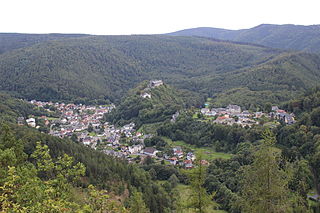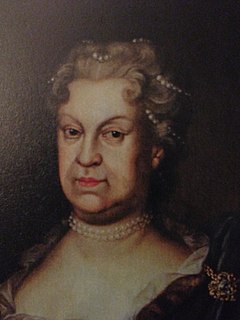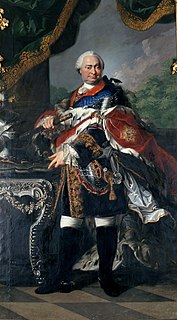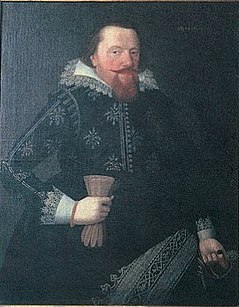Related Research Articles

Schwarzburg-Rudolstadt was a small historic state in present-day Thuringia, Germany, with its capital at Rudolstadt.

Schwarzburg is a municipality in the valley of the Schwarza in the district Saalfeld-Rudolstadt in Thuringia, Germany.

Rudolstadt is a town in the German federal state Thuringia, with the Thuringian Forest to the southwest, and to Jena and Weimar to the north.

Albrecht VII, Count of Schwarzburg-Rudolstadt was Count of Schwarzburg and founder of the Line of Schwarzburg-Rudolstadt, which later received the title of Prince. He was the youngest of the surviving sons of Günther XL, Count of Schwarzburg-Blankenburg and his wife Countess Elisabeth zu Ysenburg-Büdingen in Birstein.

Emilie Juliane was a German countess and hymn writer.

Princess Amalie Auguste of Anhalt-Dessau was a German princess of Anhalt-Dessau who was Princess consort of Schwarzburg-Rudolstadt from 1816 to 1854 as the wife of Friedrich Günther, Prince of Schwarzburg-Rudolstadt.

Prince Frederick Charles of Schwarzburg-Rudolstadt was a German Natural History collector, and from 1790 until his death the reigning Prince of Schwarzburg-Rudolstadt.

Louis Frederick I of Schwarzburg-Rudolstadt was the ruling prince of Schwarzburg-Rudolstadt, Count of Hohenstein, Lord of Rudolstadt, Blankenburg and Sondershausen from 1710 until his death.

Louis Günther II of Schwarzburg-Rudolstadt, was the ruling prince of Schwarzburg-Rudolstadt from 1767 until his death.

Günther XL, Count of Schwarzburg nicknamed the Rich or Günther with the fat mouth, was a ruling Count of Schwarzburg.

John Frederick, Prince of Schwarzburg-Rudolstadt was the ruling Prince of Schwarzburg-Rudolstadt from 1744 to 1767.

Princess Bernhardina Christiana Sophia of Saxe-Weimar-Eisenach, was a Princess of Saxe-Weimar-Eisenach by birth and Princess of Schwarzburg-Rudolstadt by marriage.

Albert Anton, Prince of Schwarzburg-Rudolstadt was the ruling Count of Schwarzburg-Rudolstadt from 1662 to 1710. He was raised to Imperial Prince in 1697, however, he chose not to accept his elevation. In 1710, he was elevated again, and this time, he accepted.

Frederick Anton of Schwarzburg-Rudolstadt was the ruling Prince of Schwarzburg-Rudolstadt from 1718 until his death.

Louis Günther I, Count of Schwarzburg-Rudolstadt was the ruling Count of Schwarzburg-Rudolstadt from 1612 until his death.

Princess Sophia Wilhelmina of Saxe-Coburg-Saalfeld was a Princess of Saxe-Coburg-Saalfeld by birth, and Princess of Schwarzburg-Rudolstadt by marriage.

Ludmilla Elisabeth of Schwarzburg-Rudolstadt was a German noblewoman and a hymn poet. She was a Countess of Schwarzburg-Rudolstadt by birth.

Charles Günther, Count of Schwarzburg-Rudolstadt was a German nobleman. He was the ruling Count of Schwarzburg-Rudolstadt from 1605 to 1612 and then the ruling Count of Hohenstein, Lord of Rudolstadt, Leutenberg, Blankenburg, Sondershausen and Arnstadt from 1612 until his death.

Louis Frederick II, Prince of Schwarzburg-Rudolstadt was from 1793 to 1807 reigning Prince of Schwarzburg-Rudolstadt.

Günther Friedrich Karl II of Schwarzburg-Sondershausen was the ruling Prince of Schwarzburg-Sondershausen following his father's abdication in 1835 until his own death in 1880. After Schwarzburg-Sondershausen joined the North German Confederation, he joined the Prussian Army and in 1879 became General of the Infantry.
References
- 1 2 Gonschior, Andreas. "Der Freiestaat Schwarzburg-Rudolstadt Landtagswahl 1919". Wahlen in der Weimarer Republik. Archived from the original on 2003-05-11. Retrieved 18 May 2021.